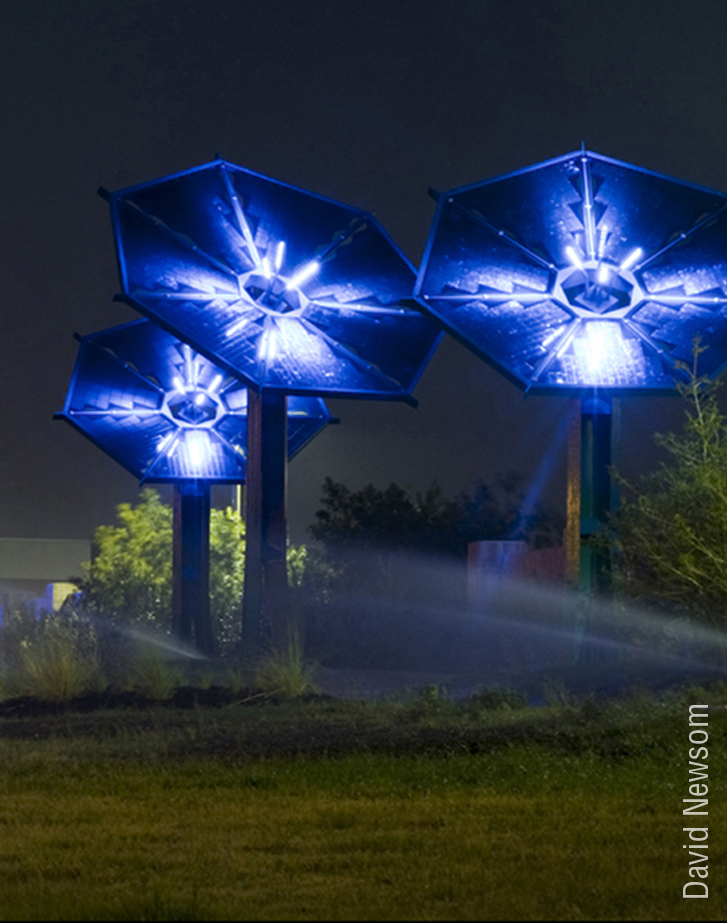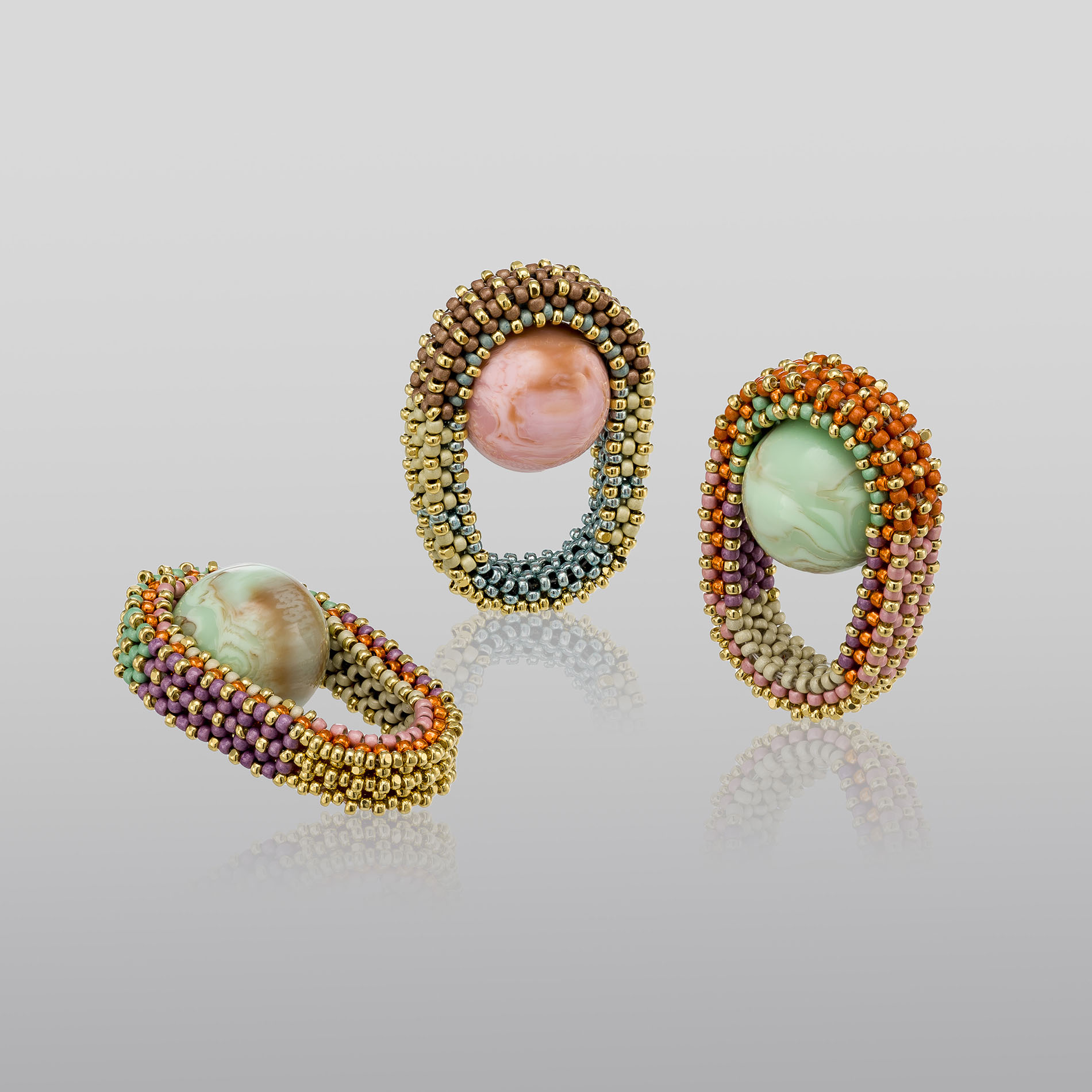Now Online at the Renwick Gallery of the Smithsonian American Art Museum
Hearts of Our People: Native Women Artists is the first major thematic show to celebrate the artistic achievements of Native women – not as anonymous representatives of their culture, but as accomplished individuals in their own right.
This landmark, multi-media exhibition at the Renwick Gallery of the Smithsonian American Art Museum showcases 82 artworks dating from antiquity to the present. Author Louise Erdrich appropriately describes the exhibition as: “Sumptuous, gorgeous, eternal, strange …alive…an encounter with power and joy!”
Of the 82 artworks in the gallery, 22 are available for online viewing. Many carry important messages for a climate-challenged world – messages of respect for nature, science, and future generations.
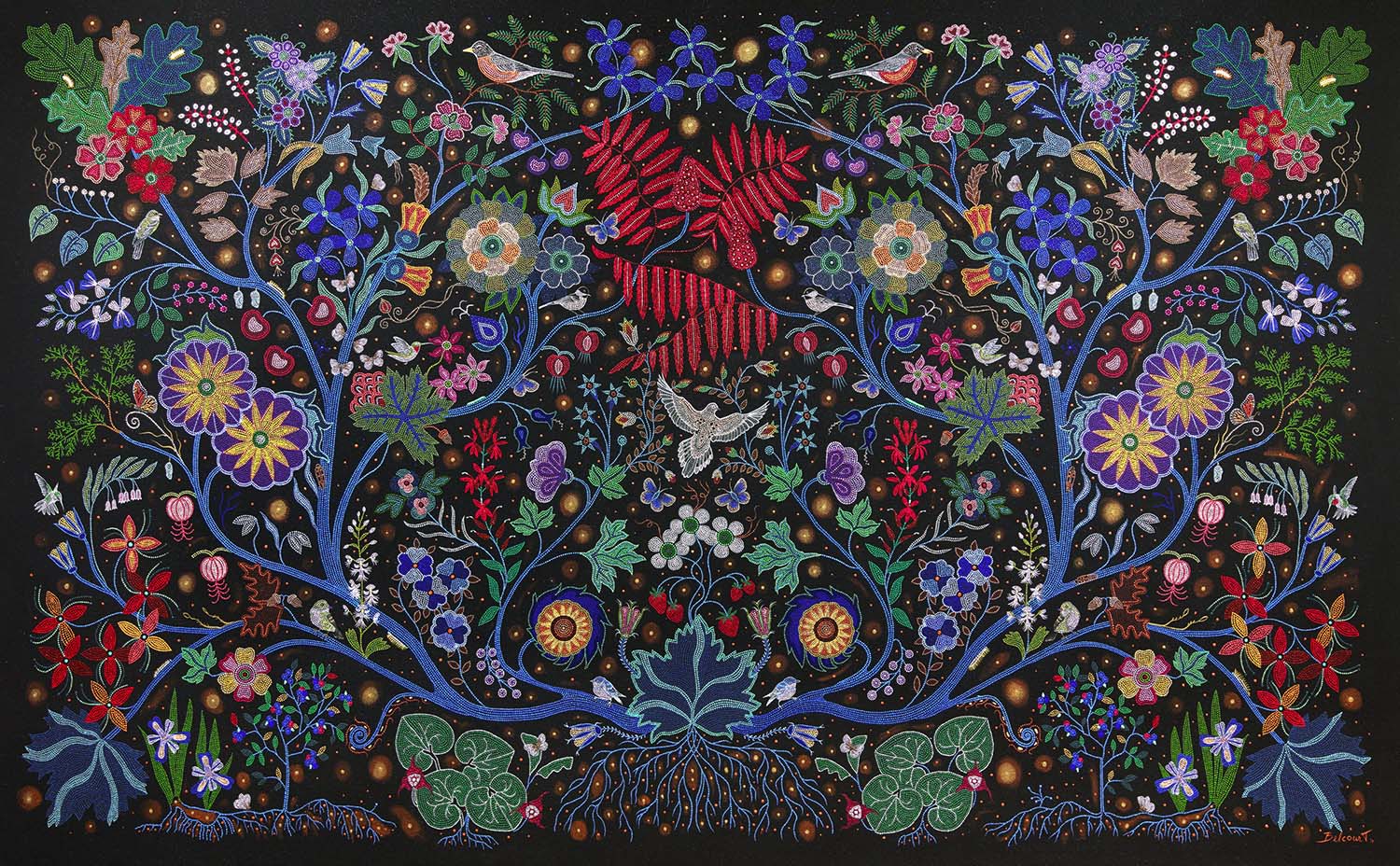
Christi Belcourt (Michif), The Wisdom of the Universe (2014). Acrylic on canvas. Dimensions: 67 5/6 x 111”. Collection Art Gallery of Ontario, Toronto. Purchased with funds donated by Greg Latremoille, 2014, 2014/6. ©Christi Belcourt. Photo courtesy of the Renwick Gallery of the Smithsonian American Art Museum.
Christi Belcourt’s The Wisdom of the Universe features threatened, endangered, or extinct Canadian plants and animals. Belcourt aims to convey the marvels and interconnected nature of all species: “This wondrous planet, so full of mystery, is a paradise. All I want to do is give everything I have, my energy, my love, my labor — all of it in gratitude for what we are given.”
Belcourt echoes themes from ancient Native artistic traditions. From the Atlantic to the Pacific, Native hunters donned elaborately decorated outer garments to honor the animals sustaining them. Two such garments – an Alaskan Central Yup’ik parka (circa 1890-1910) and a northeastern Canadian Innu (Naskapi) hunting coat (circa 1750) – are featured in the online exhibition.
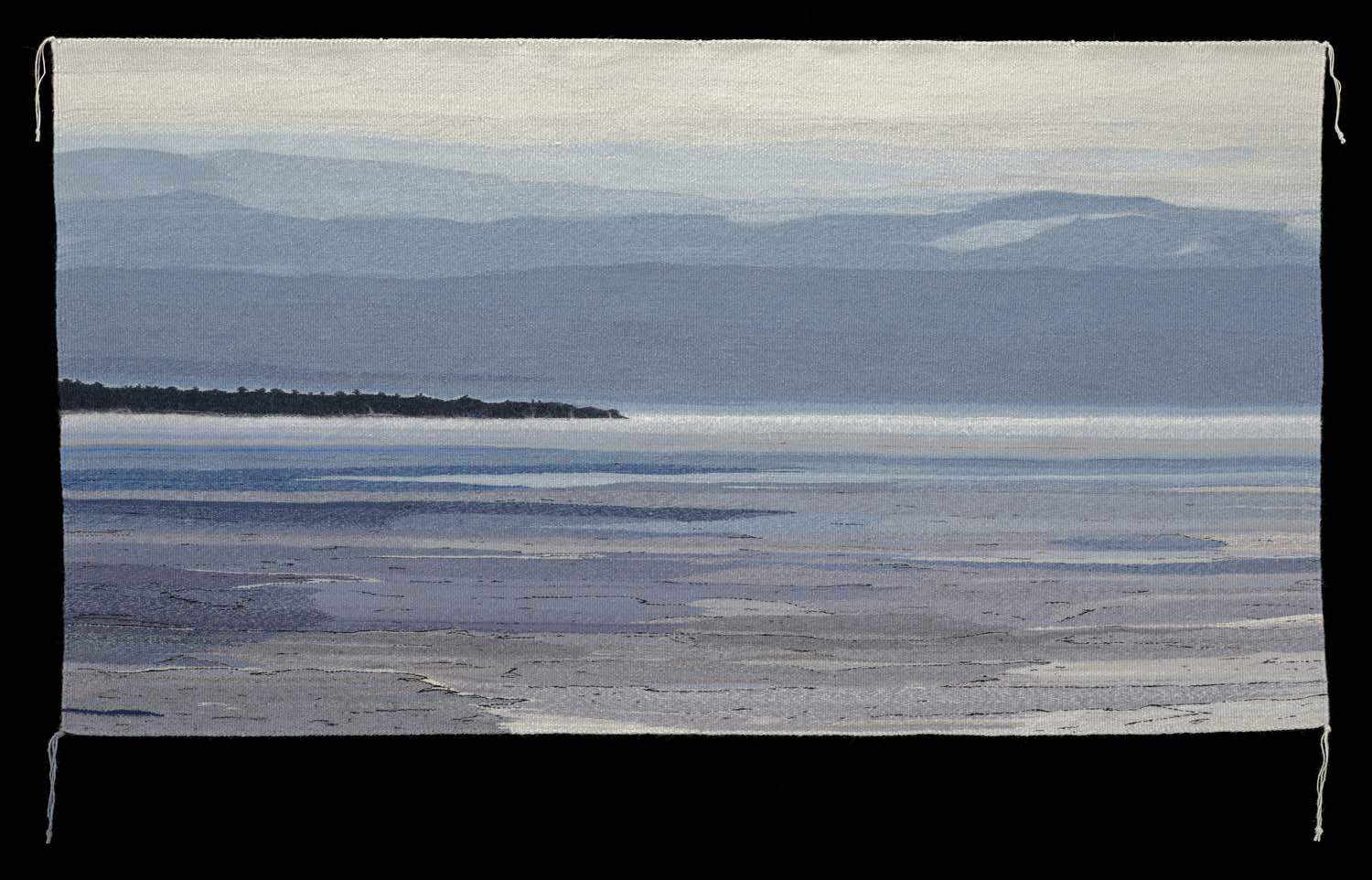
D. Y. Begay (Navajo), Náhookǫsjí Hai (Winter in the North)/Biboon Giiwedinong (It Is Winter in the North) (2018). Wool and natural dyes. Dimensions: 31 x 57.5”. The Minneapolis Institute of Art, The Jane and James Emison Endowment for Native American Art, 2019.41. Photo: Addison Doty; Minneapolis Institute of Art. © D. Y. Begay. Photo courtesy of the Renwick Gallery of the Smithsonian American Art Museum.
Navajo textile artist D. Y. Begay extends that homage to the land itself in abstract landscape paintings on wool. In February 2018, she traveled from her home in the Southwest to Grand Portage, Minnesota to spend days observing Lake Superior. Winter in the North is her tribute to the serenity of the Lake’s environs and to the inspiration and peace we gain from connection to nature.
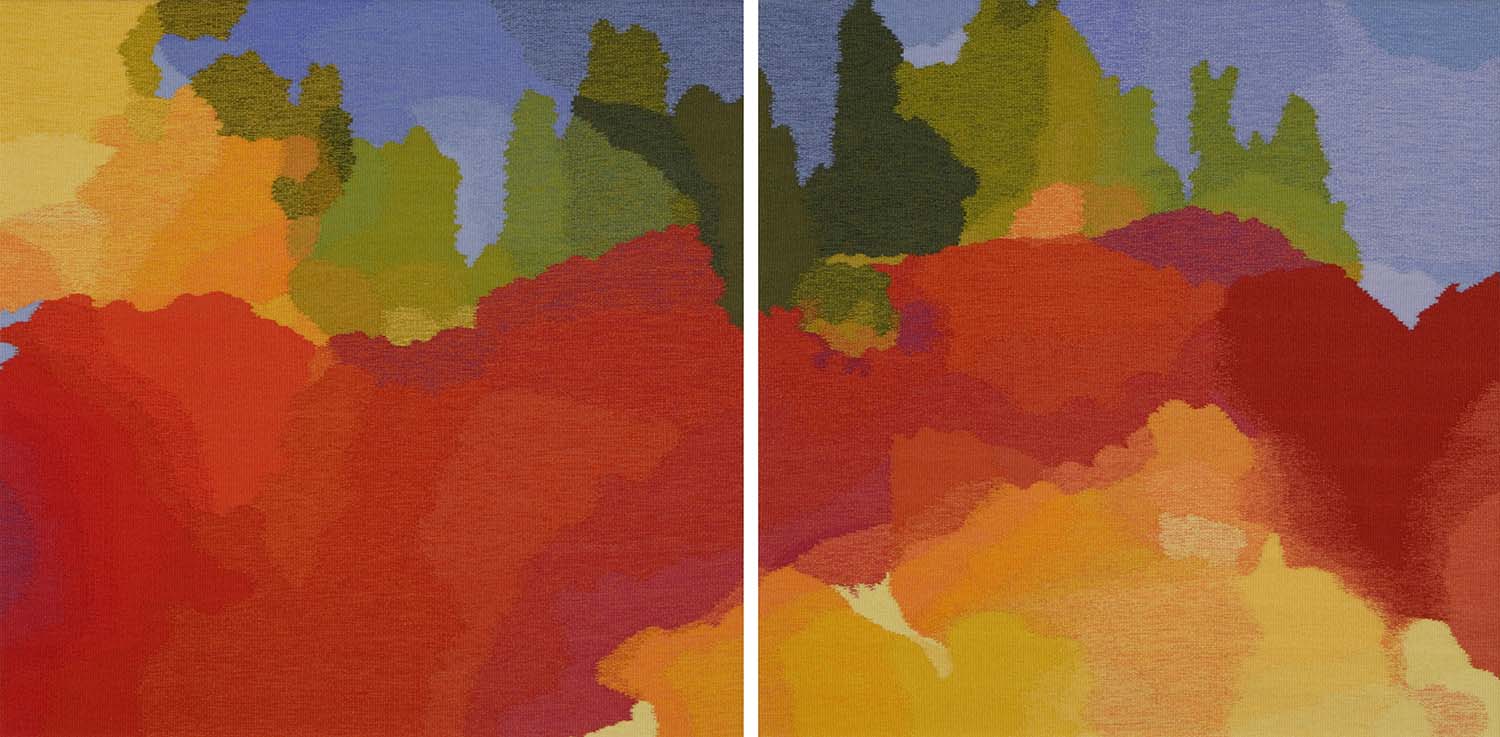
Ramona Sakiestewa (Hopi), Nebula 22 & 23 (diptych) (2009). Tapestry, wool warp and dyed wool weft. Dimensions: 36 x 36.5 x 2”. Collection of Carl and Marilynn Thoma, 2009.021a-b. ©2009 Ramona L. Sakiestewa. Photo by the Carl & Marilynn Thoma Art Foundation. Courtesy of the Carl & Marilynn Thoma Art Foundation and the Renwick Gallery of the Smithsonian American Art Museum.
Respect for science is vibrantly illustrated by Ramona Sakiestewa’s tapestry interpreting Hubble Space telescope images: “I’m very interested in deep space. The cosmos and stars. Because that’s a scientific vocabulary that Indigenous people in the Americas have had. Our cultures are based in really deep science. So when the Hubble space telescope went out into deep space and they sent back these beautiful sort of multi-layered photographs of nebulae, I decided that’s what I wanted to do as kind of my final homage to weaving.”
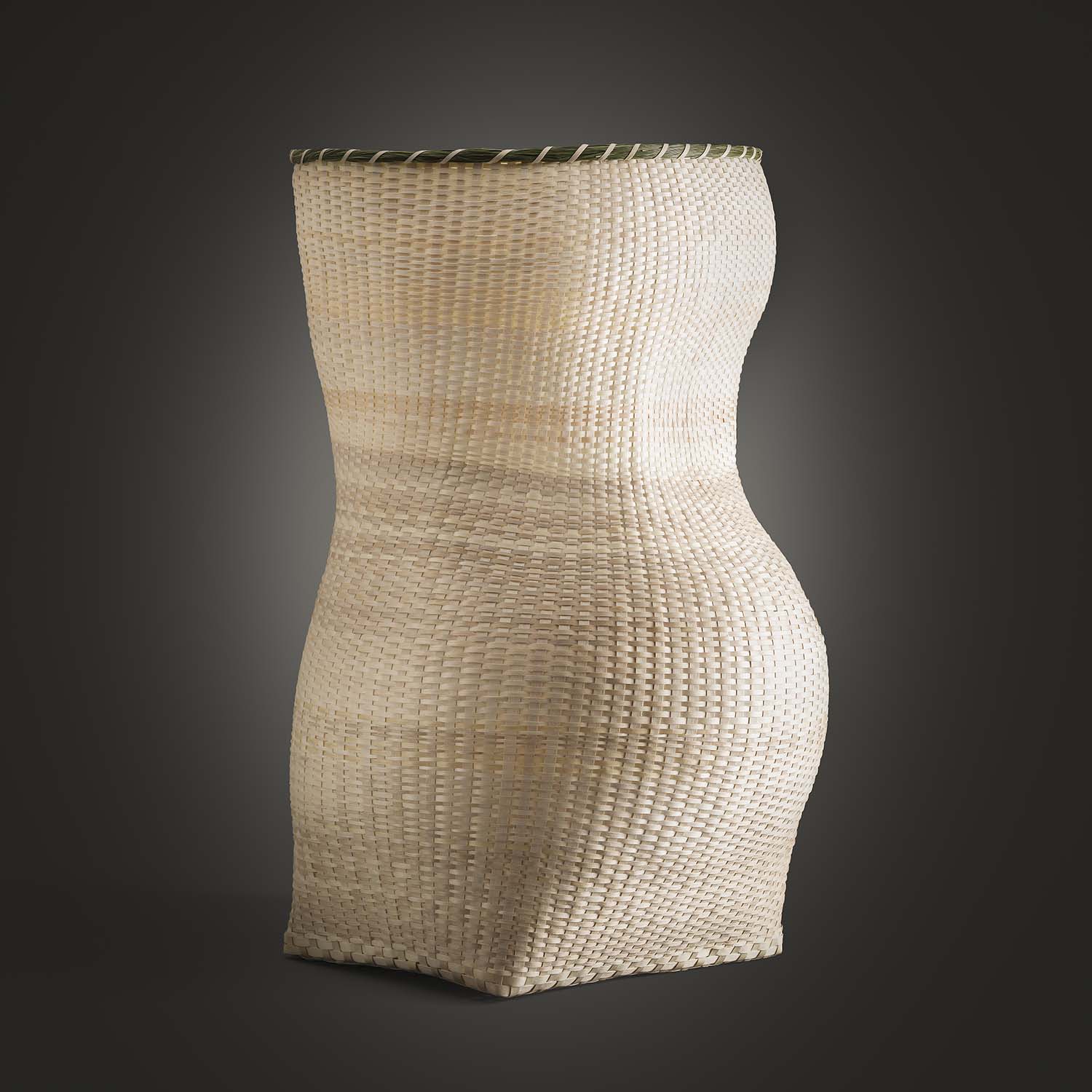
Cherish Parrish (Ottawa/Pottawatomi), The Next Generation—Carriers of Culture (2018). Black ash and sweetgrass. Dimensions: 23 x 12 x 14”. Courtesy of Cherish Parrish – Odawa & Pottawatomi – Gun Lake Band. Photo by Richard Church, Odawa-Pottawatomi. ©Cherish Parrish. Photo courtesy of the Renwick Gallery of the Smithsonian American Art Museum.
The exhibition also heralds intergenerational equity – the responsibility of each generation to leave a sustainable world to the next. Cherish Parrish wove threatened black ash wood and sweetgrass into a basket shaped like a pregnant, third-trimester woman: “[Weaving is] a generational gift that needs to be passed on and . . . nothing . . . speaks to that quite like pregnancy and motherhood…. Being a carrier of culture, that’s what you are as a Native woman.”
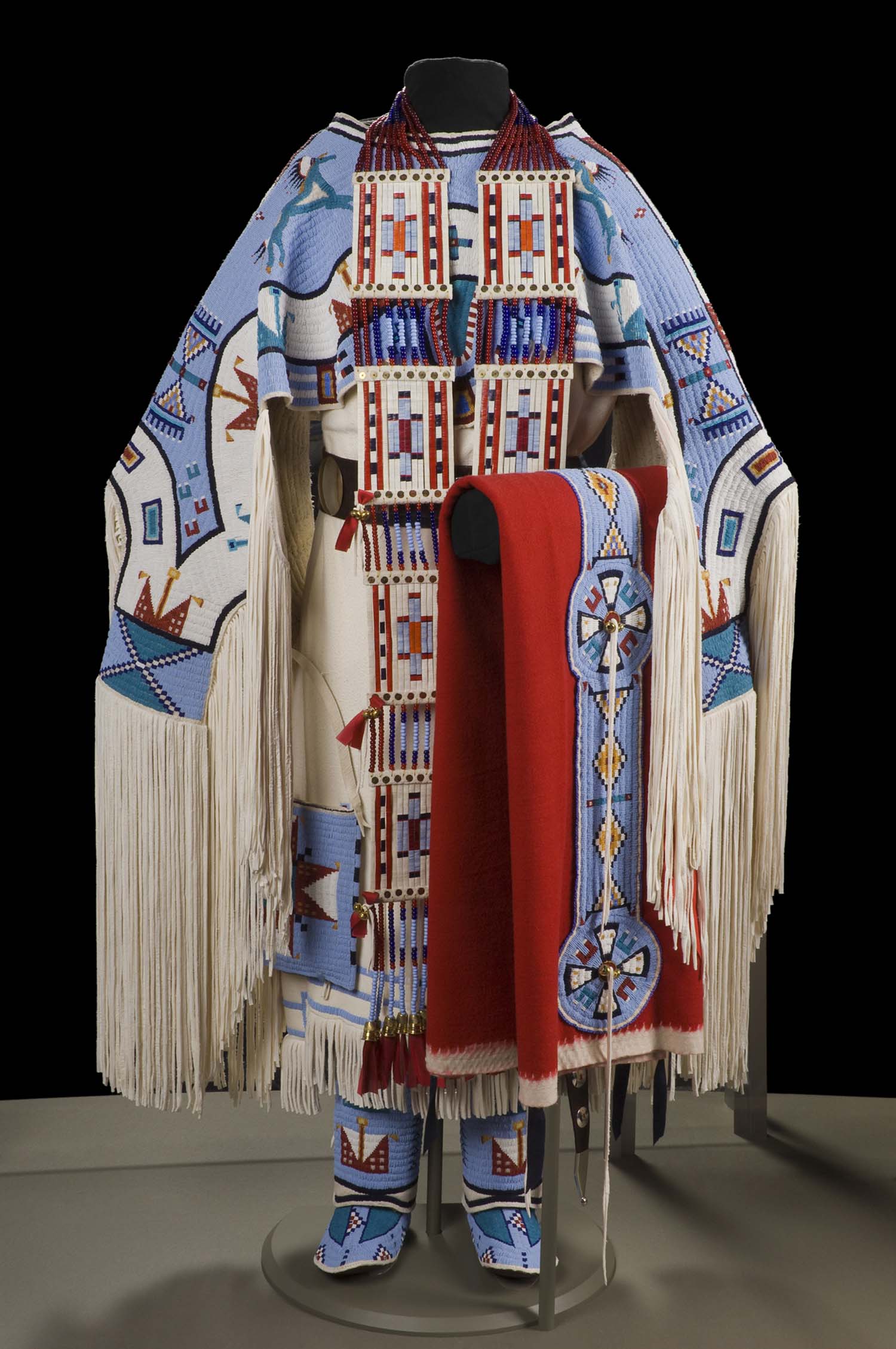
Joyce Growing Thunder Fogarty (Dakhóta/Nakoda), Juanita Growing Thunder Fogarty (Dakhóta/Nakoda), and Jessa Rae Growing Thunder (Dakhóta/Nakoda), Give Away Horses (dress and accessories) (2006). Deer hide, glass beads, canvas, thread, leather, moose hide, German silver, porcupine quills, feathers, elk hide, brass bells, ribbon, silk ribbons, and brass thimbles. Dimensions: 65 7/8 x 28.7 x 43”. National Museum of the American Indian, Smithsonian Institution, 26/5818-5821. Photo by NMAI Photo Services. ©J Growing Thunder. Photo courtesy of the Renwick Gallery of the Smithsonian American Art Museum.
Three generations of the Growing Thunder family—Joyce (grandmother), Juanita (daughter), and Jessa Rae (granddaughter) – collaborated on the elaborately decorated Give Away Horses. Jessa Rae explains: “We’re taught to be selfless…. Whatever you have, you give it. That’s how you show your love, that’s how you show your compassion for one another. That’s how you respect and honor one another.”
Don’t miss the three poignant exhibition videos (approximately 5 min. each). There, the artists explain how intergenerational respect not only “reminds us of how to be in the world,” but also bolsters resilience. As Roxanne Swentzell explains: “Wow, what a responsibility, but what an honor, to be born a woman…. Without a doubt, you can do anything you put your mind to, so there is nothing to stop you.”
Jill Ahlberg Yohe, Associate Curator of Native American Art at the Minneapolis Institute of Art, and Kiowa artist and independent curator Teri Greeves organized the exhibition with the aid of an all-female advisory board, which included Native artists, curators and art historians from a range of nations. The Renwick Gallery presented the exhibition in collaboration with the Smithsonian National Museum of the American Indian. The exhibition next moves to the Philbrook Museum of Art, Tulsa, OK (tentatively opening June 28, 2020).

